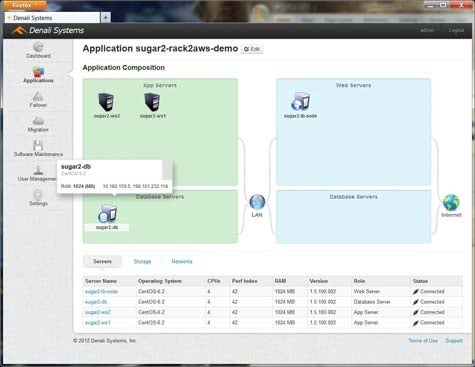In theory, cloud computing should lead to the development of the “boundary-less data center” in the sense that any resource in the cloud should be able to be invoked by any application. The trouble is that making that actually happen on the fly is still a little bit beyond the current state of the technology.
But given a little time, the folks at CloudVelocity, which today came out of stealth mode with the announcement of an additional $5 million in funding, say that is where cloud computing is headed.
CloudVelocity, formally known as Denali Systems, has created a One Hybrid Cloud (OHC) platform that currently clones multi-tier application clusters and services without modification into the Amazon Web Services (AWS) EC2 cloud. According to CloudVelocity CEO Rajeev Chawla, initial use cases for OHC will be pretty tied to organizations that want to move their application to AWS or are simply looking to use AWS as part of a disaster recovery plan. But next year, Chawla says CloudVelocity will add cloud bursting capabilities to its cloud automation platform in a way that breaks down the barriers between data centers running the same multi-tier applications.
A critical component of that strategy, says Chawla, is the ability for applications running on external data centers to maintain their connection with a local instance of Microsoft Active Directory. That means that as IT organizations move applications into the cloud, they don’t have to create a whole new mechanism for managing whom has access to what specific services, says Chawla.
As time goes on, the whole debate of private versus public cloud computing may soon be moot. If all the compute resources that make up the virtual data center are centrally managed, it should become a lot easier to apply security and compliance policies across multiple instances of an application running across multiple data centers.
As hybrid cloud computing continues to mature, it’s becoming increasingly apparent that the data center as we once knew it is being redefined. Instead of thinking about data centers as a set of discrete physical resources, cloud computing is transforming data centers into sets of modular resources that will support a new generation of highly distributed applications — each of which will utilize cloudbursting to right size the amount of IT infrastructure required. Providing that capability will no doubt require a lot more reliance on automation, but the good news is that it’s a goal that is definitely now in sight.



